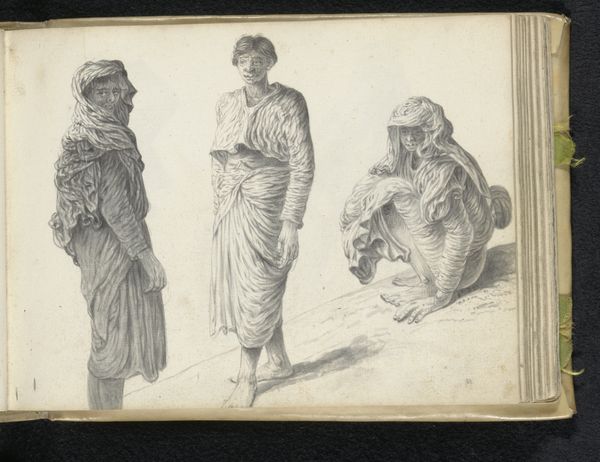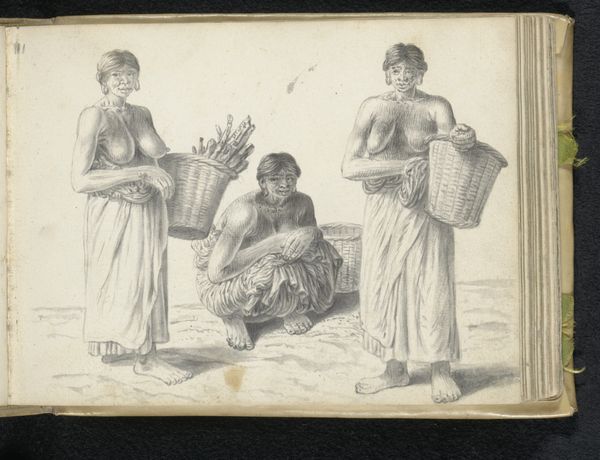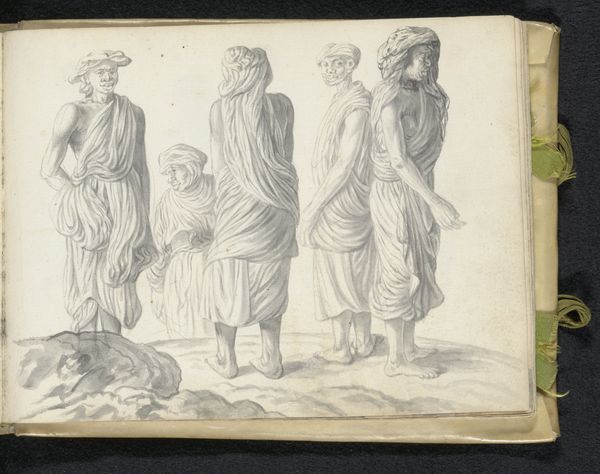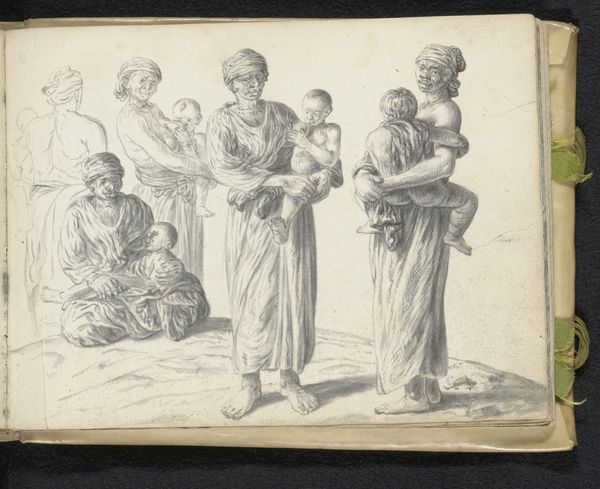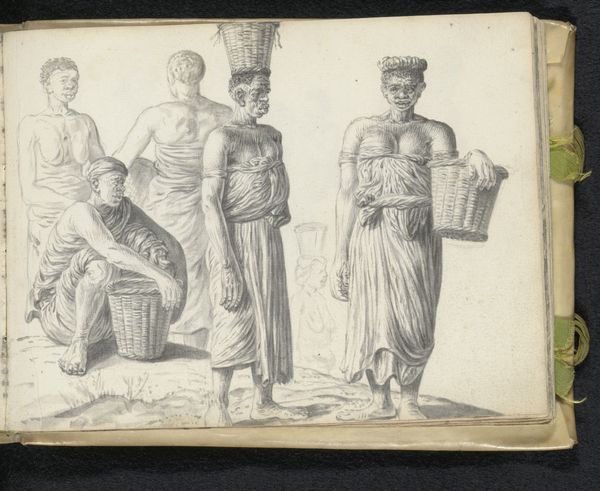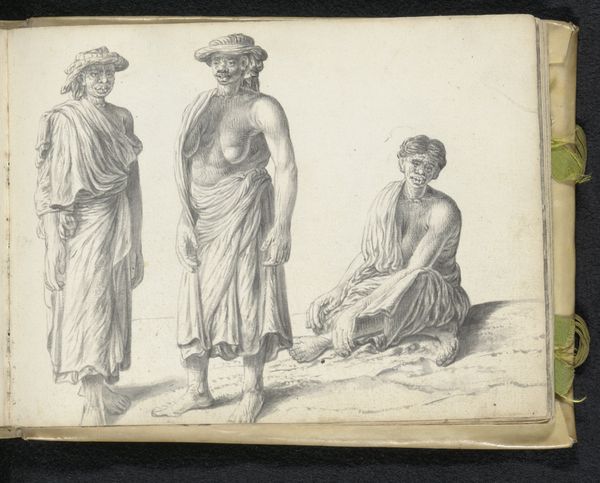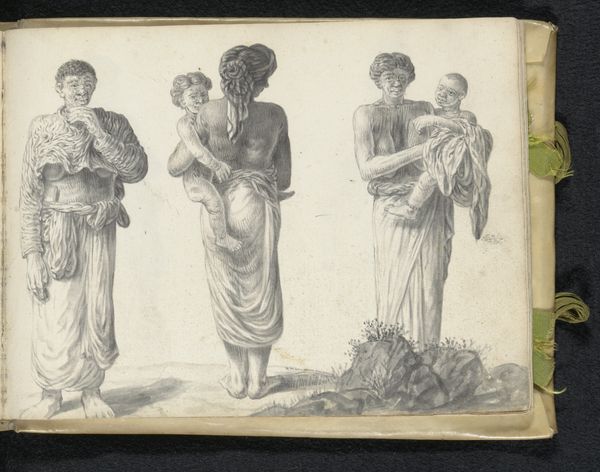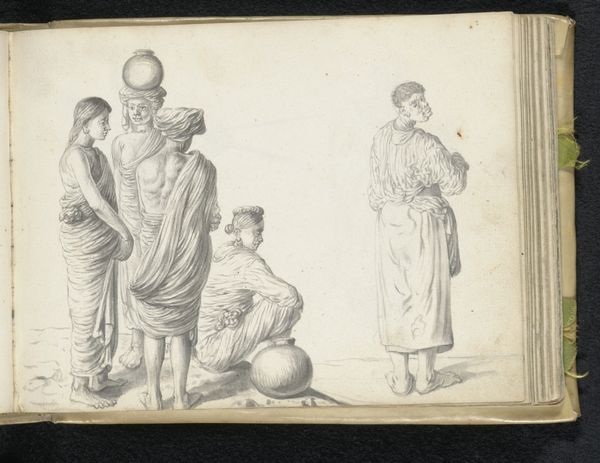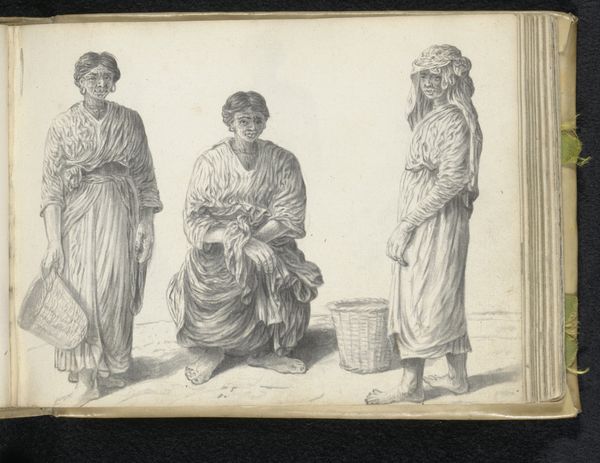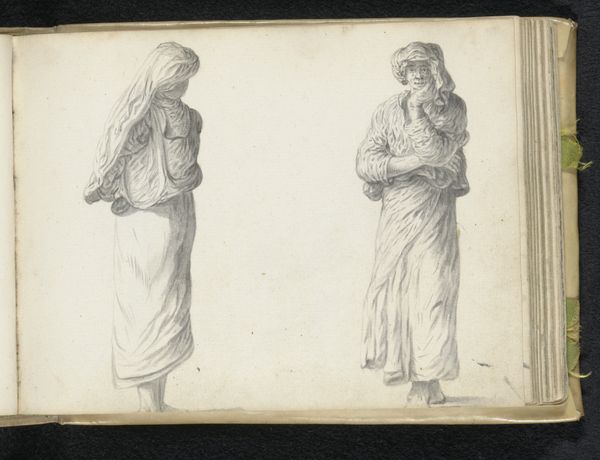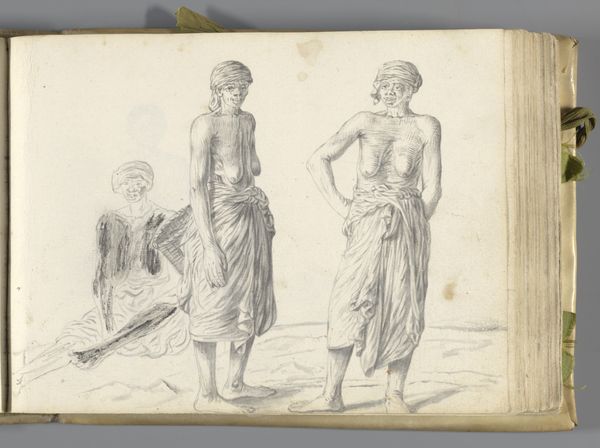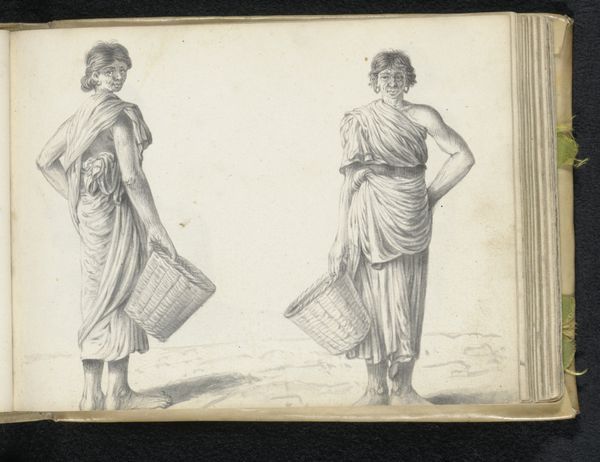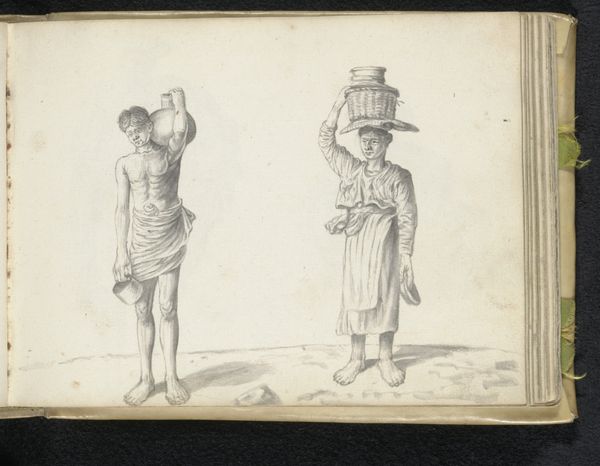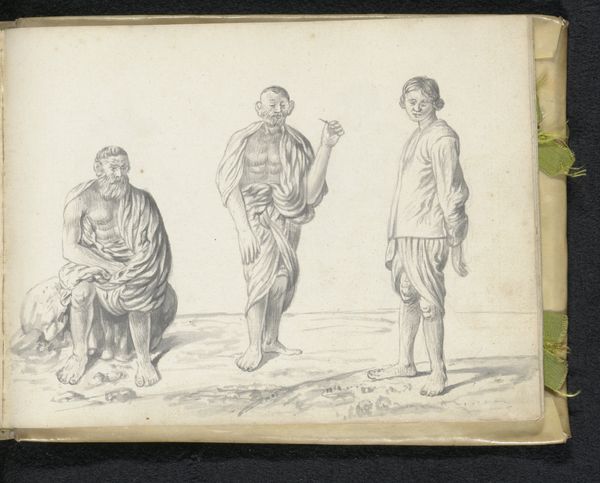
drawing, paper, pencil
#
portrait
#
drawing
#
baroque
#
dutch-golden-age
#
figuration
#
paper
#
pencil
#
genre-painting
Dimensions: height 148 mm, width 196 mm
Copyright: Rijks Museum: Open Domain
Curator: Welcome. Before us is a drawing by Esaias Boursse, titled "Three women and a child," created in 1662. It’s rendered in pencil on paper. Editor: The grayscale creates an intense, somber mood. Despite it being a quick drawing, each figure looks monumental in its draped clothing. I can also appreciate the labor the figures put into draping themselves as part of the aesthetic, and that also went into making the artwork as part of the final touch of work that ties to its social implications. Curator: Fascinating. I notice how Boursse uses veils and baskets, age-old symbols of community and labour, subtly to present these figures within a recognizable framework of women and a child. Their faces have heavy and rather unexpressive detail, with each subject standing quite awkwardly compared to classical subjects from Rome or Greece. What do you make of their ambiguous gestures, or really the limited amount of facial features being offered to us as an audience. Editor: Indeed, I can agree that with their gestures, as an audience it makes the viewer's mind more drawn to thinking of the social environment in the dutch golden age. For such detailed pencil work on their fabric as a time for hand production only, you think of a very intimate, timely effort for labor as these cloths might be made to wear by the people being painted here. The fact it seems like he chose everyday people helps think more so of consumption and not production being highlighted through this snapshot into a group. Curator: I wonder about this work in relation to images of family lineage, and the lack of visual engagement that’s provided between the family and viewer. Maybe Boursse attempts to hint more broadly and suggest a human universality instead through the shared use of common materials across race, class, and culture to be shared and be of one purpose. The ambiguity feels deliberate. Editor: Yes. Through his chosen rendering process and emphasis on costume through simple means in the artwork’s production, it appears he offers us an interpretation about how our needs for fabrics have been similar to one another across the lines of social classes during this time, through making it through bare hands. Curator: A striking snapshot of life made all the richer by considering these dimensions. Editor: An exercise of art historical and aesthetic analysis to see its connection to materiality of the production and consumption.
Comments
No comments
Be the first to comment and join the conversation on the ultimate creative platform.
